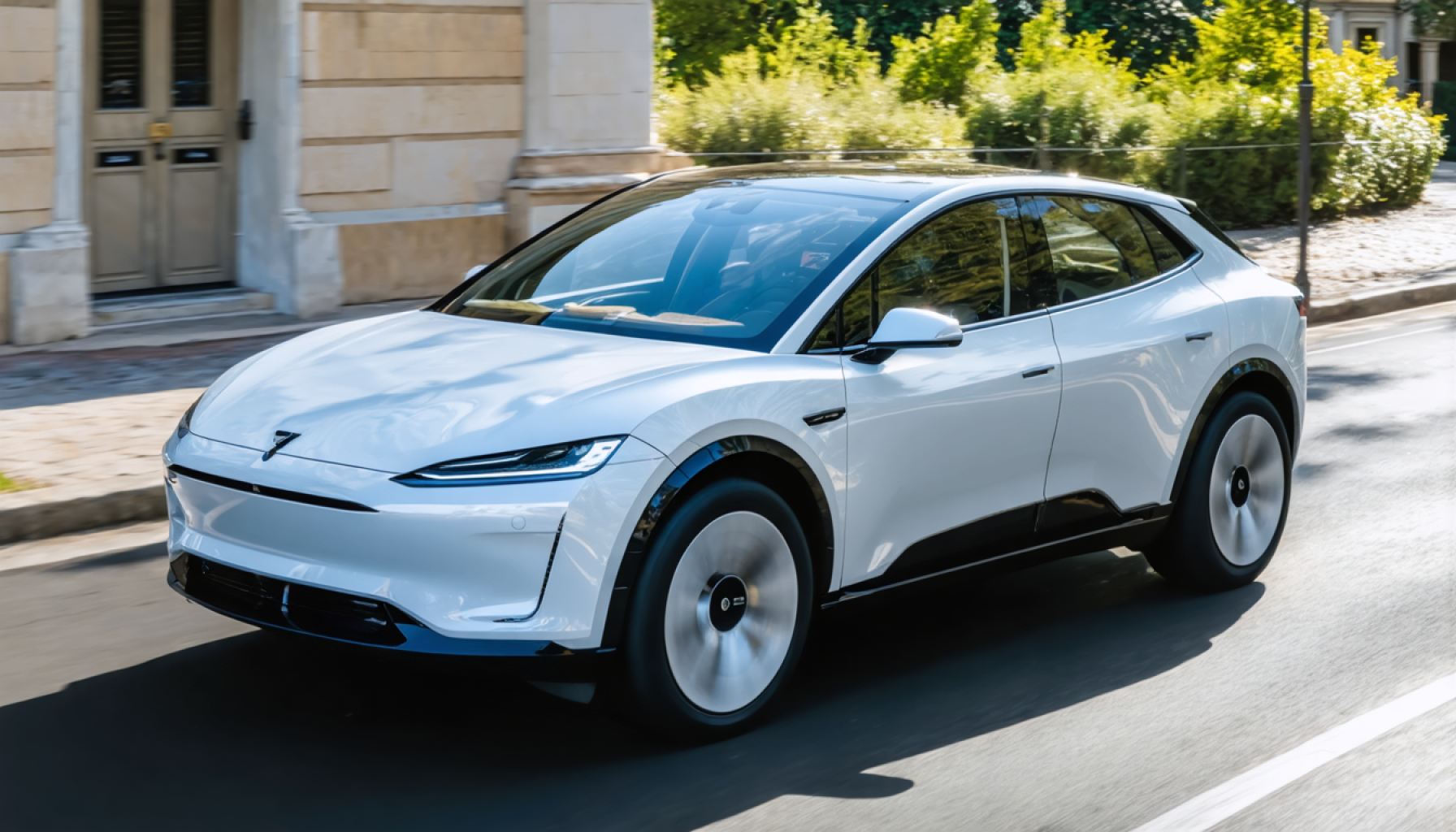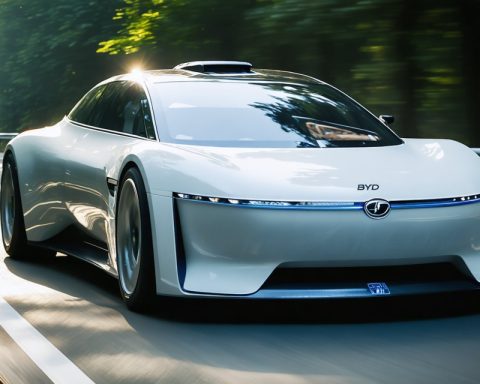- SUVs are transitioning to electric power, driven by consumer demand for practical and eco-friendly vehicles.
- The Jeep Wagoneer S marks Jeep’s move into electrification, boasting up to 275 miles per charge, with pricing starting at $71,995.
- Audi expands its electric lineup with the Q6 e-tron, offering a range of over 300 miles and fast charging, priced from $65,095.
- Polestar introduces the Polestar 3, a minimalist SUV with Volvo’s tech, priced at $86,300, emphasizing design purity and innovation.
- The emergence of electric SUVs aligns with a future focused on sustainability, offering consumers diverse choices in the automotive market.
The world of automobiles is at a thrilling juncture; SUVs have reigned supreme in the sales charts for years, but now they’re embracing a new path: electricity. This seismic shift is fueled by consumer desire for practicality marinated in eco-consciousness, creating a fertile ground for electric SUVs to flourish.
Enter the Jeep Wagoneer S—an audacious leap into the electric realm by a brand synonymous with rugged, all-terrain capability. Slated for a 2025 debut, this midsize marvel is a complete departure from its gasoline-fueled predecessors. Adorned with the 4Xe badge, this model is a harbinger of Jeep’s electric future. The Wagoneer S promises up to 275 miles on a single charge, reshaping Jeep’s identity from gas guzzler to green warrior. Step inside, and the cabin merges quintessential Jeep ruggedness with the slick sophistication of a cutting-edge interface, where even the front passenger enjoys their own digital realm with a dedicated screen. At an entry price of $71,995, the Wagoneer S Launch Edition isn’t just a car; it’s a statement.
Meanwhile, Audi, a veteran in this burgeoning category, gracefully expands its lineup with the Q6 e-tron. This latest offering bridges the gap in Audi’s electric family, backed by an avant-garde EV platform that champions a range of over 300 miles. Fast charging is no longer a fantasy but a feature, courtesy of Audi’s pioneering battery technology. Within this automotive marvel, passengers find refuge in a sanctuary of modernity, where aesthetics and technology coalesce. The Q6 e-tron’s design exudes the unmistakable Audi charm—bold yet sophisticated—ensuring it stands apart in a sea of mundanity. Pricing begins at $65,095, delivering prestige at a competitive rate.
Then there’s Polestar, an emergent star in this cosmic shift, unveiling its first SUV, the Polestar 3. Borne from Volvo’s technological legacy, it delivers exceptional range packed in a minimalist yet charmingly Scandinavian shell. The Polestar philosophy is clear: simplify and digitize. The interior eschews the chaos of knobs for a seamless touchscreen experience, though the tactile tradition of manual controls takes a bow. The Polestar 3 Launch Edition, arriving at $86,300, is not just a car—it’s an exploration of design purity.
As automakers race to redefine the driving experience, electric SUVs are not just vehicles; they are the vanguards of a future that blends utility with sustainability. The roads ahead are diverse and boundless, leaving consumers empowered with choices aplenty, all steering toward a world less reliant on fossil fuels. The takeaway is simple: the electric SUV revolution is not just arriving—it’s here, ushering in an era where grandeur meets green at the crossroads of innovation and image.
Electric SUVs: The Future of Sustainable Driving is Here
Introduction
The automotive industry is undergoing a transformative phase. Traditional combustion engines are giving way to electric powertrains, with manufacturers focusing heavily on the SUV segment. Driven by a surge in eco-conscious consumer demand, brands like Jeep, Audi, and Polestar are paving the way forward with innovative electric SUVs. This article explores these exciting releases while diving into the factors driving the transition toward electrified models.
Jeep Wagoneer S: Redefining Ruggedness
The Jeep Wagoneer S marks a bold entry for a brand long associated with adventure-seeking vehicles. Now, stepping into the electric frontier with the 4Xe badge, Jeep commits to sustainability without compromising its off-road prowess.
Features and Specifications
– Range: The Wagoneer S offers up to 275 miles on a single charge, suitable for long journeys.
– Interior Tech: Includes a dedicated screen for the front passenger, extending digital capabilities across the cabin.
– Pricing: Starting at $71,995, the Wagoneer S positions itself as a premium, eco-friendly option.
Real-World Use Cases
– Ideal for eco-conscious families seeking weekend adventures with minimal environmental impact.
– Practical for daily commutes with its substantial range, reducing the need for frequent recharges.
Audi Q6 e-tron: Blending Prestige with Performance
Audi’s Q6 e-tron exemplifies the brand’s commitment to luxury blended with technological advancement. The vehicle integrates Audi’s new EV platform, ensuring a smooth and dynamic driving experience.
Key Specifications
– Range: With over 300 miles per charge, the Q6 e-tron offers longer treks without range anxiety.
– Charging: Fast-charging capability significantly reduces downtime, facilitating quick energy replenishment.
– Price Range: Competitive starting price of $65,095, including advanced in-car entertainment and comfort features.
Pros and Cons Overview
Pros:
– Extensive range and rapid charging tech.
– Luxurious interior aligning with Audi’s brand ethos.
Cons:
– Limited cargo space compared to some competitors.
Polestar 3: The Epitome of Scandinavian Simplicity
The Polestar 3 is a testament to Swedish design, where minimalism meets impressive range and functionality. As Polestar branches out from its Volvo roots, it emphasizes digital interfacing over traditional controls.
Specifications
– Range: Delivers a robust range complementary to its minimalist approach.
– Interior: Features an intuitive touchscreen interface which simplifies the driving experience.
– Pricing: Launch Edition comes in at $86,300, reflecting its upscale market positioning.
Market Trends & Insights
– Polestar’s Strategy: Tapping into markets that prioritize design ethos and eco-friendliness.
– Consumer Preferences: High demand for user-friendly interfaces, e.g., Teslas and other trailblazing EVs.
Controversies and Limitations
– Charging Infrastructure: Despite advancements, EV adoption suffers from inadequate charging networks, requiring collaborations between automakers and governments to expand infrastructure.
– Initial Costs: Higher upfront costs can deter budget-conscious buyers, though long-term savings on fuel and maintenance can offset these costs.
Insights and Predictions
– Majority of car manufacturers are steadily increasing their electric vehicle portfolios.
– By 2030, electric SUVs are predicted to capture a significant share of SUV sales globally, further accelerated by regulations promoting environmental sustainability.
Conclusion
Electric SUVs are more than just a trend; they represent the future of automotive innovation. By marrying luxury and technology with eco-consciousness, models like the Jeep Wagoneer S, Audi Q6 e-tron, and Polestar 3 epitomize this shift. For consumers, the choice to adopt electric SUVs not only supports sustainability but also enhances travel experiences with cutting-edge features.
Actionable Recommendations
– For Consumers: Consider your primary needs (e.g., range, luxury, tech) when selecting an electric SUV to maximize satisfaction.
– For Investors: Focus on companies leading in EV technology and infrastructure to capitalize on this growing market.
For more insights into the evolving automotive landscape, visit the official sites of the respective brands: Jeep, Audi, and Polestar.














